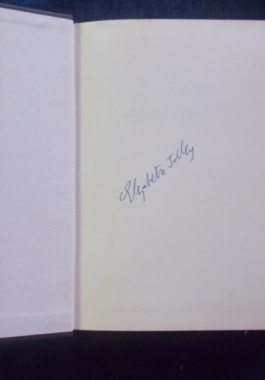Two volume set in slipcase: Miners And Soldiers: The Silver City: Broken Hill in the early 1900s was a hell on earth. Idriess draws on his childhood experiences there to evocatively describe what life was like: Flies and dust and isolation, the deadening feeling that no-one else in the world knew or cared whether we lived or died out there…typhoid, pneumonia, dysentery and lead poisoning…so did the dirty brown water, so frightfully expensive, that in drought time came rumbling up in water trains from South Australia. He also conveys an acute sense of his distress at the despoilation of the natural world by wave after wave of settlers. Lightning Ridge: Idriess almost died he almost died in the typhoid epidemic that killed his mother and he was sent to his grandmother in Sydney.He found work on a paddle-steamer on the run to Newcastle. After a typhoid fever relapse he worked in the western districts of New South Wales in various jobs. Then the call of opals drew him – like so many other young men – to Lightning Ridge in about 1910 and although he did not strike it rich, he wrote short pieces for The Bulletin about life on the opal fields. The Desert Column: One of Idriess’ earliest works, published in 1932 and based on the diaries that he kept throughout the war. driess served as a sniper with the 5th Australian Light Horse. Enlisting in 1914, he began his diary, As we crowded the decks off Gallipoli and he continued writing until returning to Australia. The diaries cover his experiences of life in the trenches at Gallipoli to the battles at Romani and Beersheba. Heroes Of The Outback: The Cattle King: an inspiring tribute to the remarkable life of Sir Sidney Kidman – the Cattle King. At the age of 13 Sidney Kidman ran away from home with only five shillings in his pocket. He went on to become a horse dealer, drover, cattle buyer and bush jockey and he also ran a coach business. Above all, Kidman created a mighty cattle empire of more than a hundred stations, fighting droughts, bushfires, floods and plagues of vermin to do so. His enterprise and courage won him a huge fortune and made him a legend. Flynn of the Inland: The true story of the man who pioneered the Flying Doctors and Bush Hospitals of Australia in the early 1900’s. Ever the dreamer, Flynn did not rest until his dream of saving lives in the bush was realised through a revolutionary new system of using light aeroplanes as ambulances to help overcome the problems of distance in the huge Australian Outback. Lasseter’s Last Ride: Having himself been a prospector, the story Idriess constructed out of the fragments of documentary evidence — a few reports, the barely legible diary and letters found buried near Lasseter’s last camps – is probably very close to what actually happened. Harry Lasseter had once discovered a rich gold reef in unexplored west Central Australia. Owing to a faulty watch, the bearings he took were useless. An expedition was fitted out to locate it. From the first, misfortune dogged the steps of the party. Food ran short and they returned to the base-camp – all except Lasseter, who went on alone. When his two camels bolted he was left waterless in the desert. Blinded by sand and tortured by dysentry, he found the reef, but died shortly afterwards, deserted by a tribe of aborigines with whom he had tried to make friends. Mr. Idriess tells this story in a simple, virile style which is, in its intense economy, comparable to Hemingway at his best.
Greatest Stories: Miners And Soldiers / Heroes Of The Outback: Ion Idriess
$38.00
Only 1 left in stock











